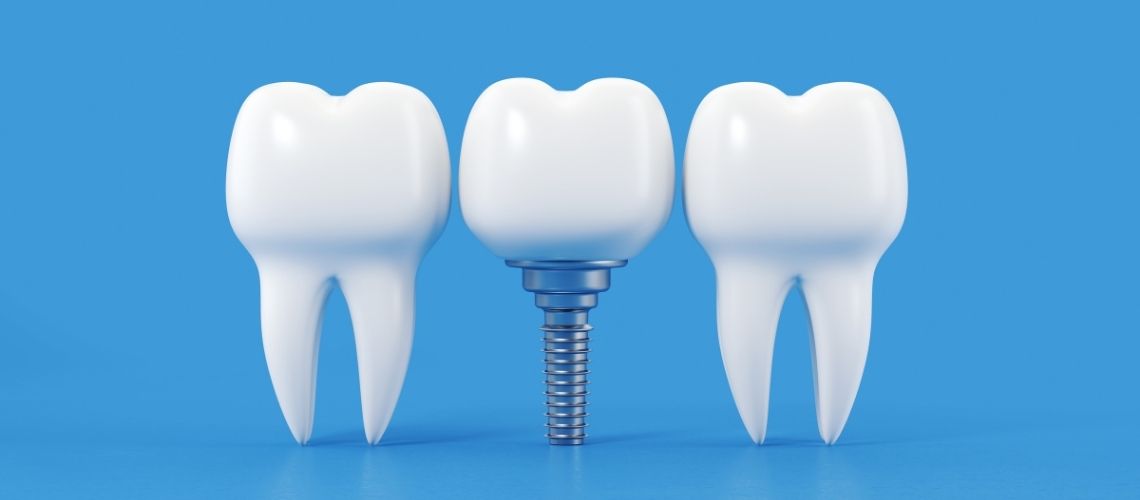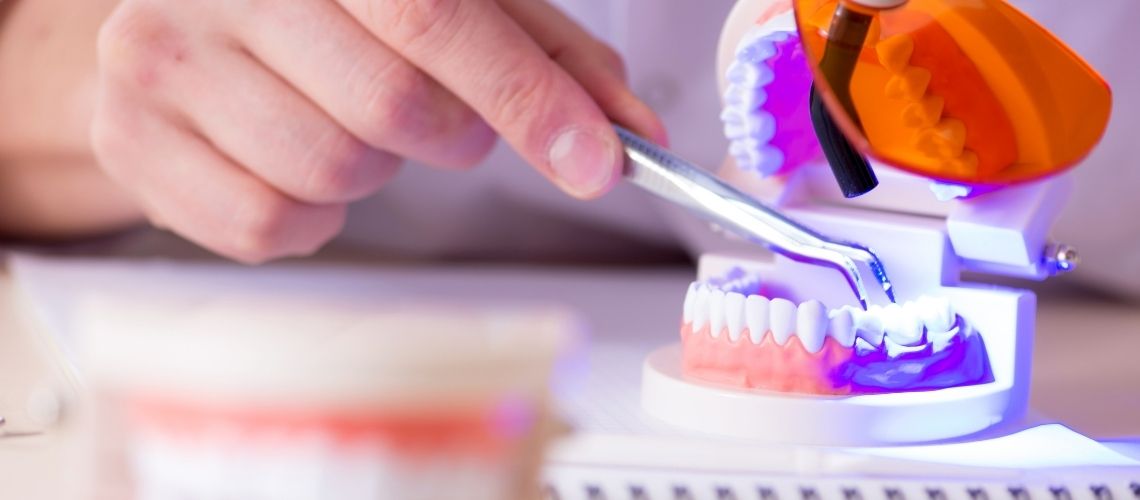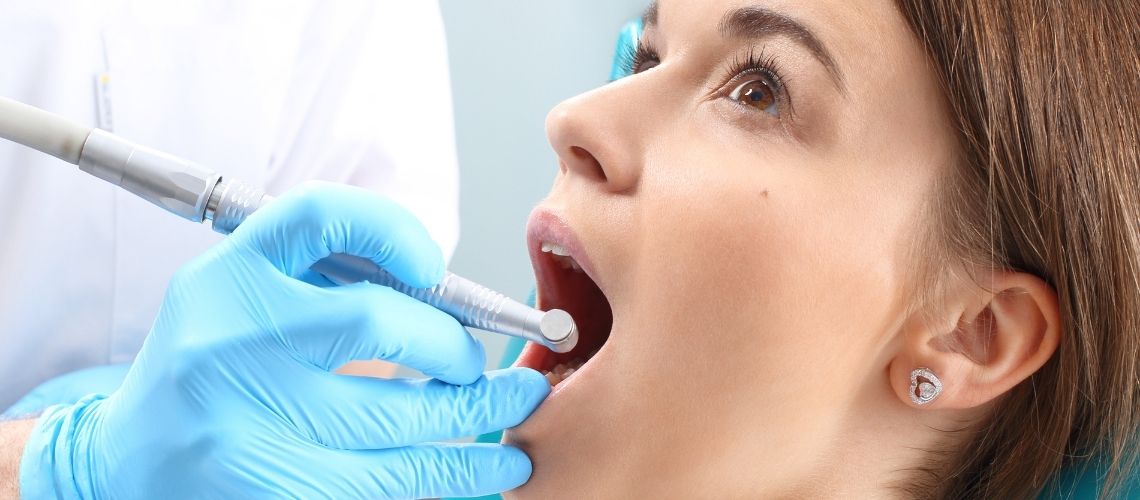Root canal inflammation is an infection that occurs in the deepest parts of the teeth. This condition usually arises when bacteria reach the pulp part of the tooth due to the progression of cavities. If left untreated, it can cause severe pain and even tooth loss. Therefore, early diagnosis and proper treatment are of great importance. Dentists control the inflammation by cleaning the infected area and, if necessary, performing root canal treatment. Additionally, antibiotic treatment may be required to prevent the spread of the infection. Effective oral hygiene, combined with these treatments, is effective in overcoming root canal inflammation.
Definition and Treatment Methods of Root Canal Inflammation
Root canal inflammation is a health issue that occurs under the living tissue of the tooth, known as the pulp, and is usually caused by a bacterial infection. It starts at the tip of the tooth root and can progress to the jawbone. This process leads to damage to the tooth and surrounding tissues. The inflammation begins when bacteria infiltrate the root canal due to caries or trauma that damages the enamel and dentin layers. The treatment process varies depending on the severity and spread of the infection.
- The first step is to determine the location and size of the infection.
- Dentists begin the treatment by cleaning the infected tissues.
- Advanced treatments, including root canal treatment, may be necessary.
- Antibiotics may be prescribed to prevent further spread of the infection.
- For the treatment to be effective, the patient must maintain good oral hygiene.
Factors Causing Pulp Infection
Pulp inflammation is the infection of the pulp, which forms the central nerve and vascular system of the teeth. This condition can be triggered by various external factors. The main factors causing pulp infections include microbial invasions, traumatic damages, and the effects of chemical substances on the pulp.
- Microbial Invasions: Tooth decay is one of the most common threats to the pulp. Bacteria can infiltrate the pulp tissue through decaying tooth material. Additionally, infections caused by periodontal diseases can progress along the root canal and threaten the health of the pulp.
- Traumatic Damages: Physical damages such as breaking or cracking of the tooth can directly lead to pulp damage. Such traumas disrupt the protective tooth structure and allow microorganisms to enter the pulp. Blows to the teeth can also cause damage to the pulp vessels, leading to inflammation.
- Chemical Effects: Certain chemical substances, such as agents used during tooth whitening procedures, can pass through the enamel and dentin and irritate the pulp. The effects of these chemicals on the pulp can lead to inflammation.
These factors lead to pulp inflammation, resulting in pain, sensitivity, and other symptoms. Pulp infections usually require specific treatment methods. If not intervened at the early stages, the situation can develop into more serious health problems. Dentists use various methods to treat such infections. The treatment process may vary depending on the degree and spread of the infection. Effective treatment and timely intervention play a critical role in protecting pulp health and preventing more serious complications.
Prevalence of Root Canal Inflammation
Root canal inflammation and tooth decay are among the significant public health issues. In the United States, one in 2600 people is hospitalized due to dental infections. Approximately 13% of adults visit the dentist for toothache or infection within four years.
- Untreated tooth decay is seen in 41.9% of adults living below the poverty line.
- This rate drops to 16.6% in individuals with higher income levels.
- Overall, 90% of adults and 42% of children aged 6 to 19 have tooth decay.
Periodontal disease is also a significant public health issue and is common among the elderly population in America. 35% of individuals aged 30 to 90 have this disease. The disease can progress to pulp inflammation through advancing caries, which can lead to serious health problems.
Socioeconomic factors have a significant impact on dental health. Low-income groups face dental decay and related health problems more frequently than high-income groups. Effective oral and dental care play a crucial role in preventing these issues. Regular dental check-ups and proper dental care from an early age can prevent serious dental problems in later years.
Symptoms and Examination Methods of Pulp Condition
Root canal inflammation occurs when the pulp tissue inside the tooth becomes infected. In the early stages of the infection, the tooth pulp causes mild or temporary pain. Advanced stages manifest as more severe and continuous pain. Dentists perform a detailed examination to make the correct diagnosis, considering these symptoms.
Initial Symptoms:
- White opaque spots on the tooth surface
- Sensitivity to cold or hot foods and drinks
Advanced Symptoms:
- Persistent and severe toothache, especially increasing at night
- Palpable swelling in the gums or around the jaw
Serious Condition Indicators:
- Noticeable swelling in the face
- Difficulty opening and closing the mouth, swallowing, or speaking
While evaluating the condition of the tooth, dentists also consider the patient’s general health information. This is especially important in cases where the infection poses a risk of spreading to a larger area. This step-by-step examination process is crucial for creating an effective treatment plan. Each symptom is assessed to understand the source and intensity of the infection. This detailed analysis before starting the treatment is essential to ensure the patient’s quickest recovery.
Diagnosis of Root Canal Inflammation
Modern imaging techniques play a significant role in diagnosing root canal inflammation. Advanced imaging methods are essential for determining the location and extent of the infection. Initially, dental radiographs are used by dentists. These radiographs show which part of the tooth is infected.
- Orthopantomography: Provides a panoramic view of the teeth and evaluates the jaw structure.
- Intraoral radiographs: Provide a close-up view of the infected area. This group includes periapical and bitewing radiographs.
- Cone Beam Computed Tomography (CBCT): Provides detailed 3D images and examines conditions such as periapical diseases, pericoronitis, and osteomyelitis.
Further examinations may be necessary after imaging. In this case, methods such as magnetic resonance imaging (MRI) and contrast-enhanced computed tomography (CT) come into play. These methods provide a detailed examination of the soft tissues in the face and jaw area. Additionally, laboratory tests are important for patients showing severe infection symptoms. Complete blood count shows the impact of the infection on the body, while blood cultures and lactic acid level measurements are performed in severe cases. These tests help assess the patient’s general health status and the severity of the infection.
Treatment of Root Canal Inflammation
The treatment of root canal inflammation varies depending on the severity and spread of the infection. The first step is for the dentist to perform a detailed examination. During this examination, imaging techniques such as X-rays are used to determine the source and spread of the infection. Cleaning the infected area forms the beginning of the treatment.
- If the pain is caused by irreversible pulpitis, root canal treatment is recommended.
- If the pain is caused by an acute periapical abscess, the initial intervention involves draining the affected tooth.
Subsequently, root canal treatment is performed to eliminate the infection from the root. If the tooth is too damaged to be saved, extraction may be necessary. In both cases, the dentist performs the necessary procedures to ensure that the infection is completely removed.
In the post-treatment period, it is crucial for patients to maintain oral hygiene. Regular tooth brushing and flossing reduce the risk of infection and increase the success of the treatment.
Use of Antibiotics:
Antibiotics are prescribed by the dentist only in specific situations. Antibiotic treatment may be necessary if the infection spreads beyond local boundaries to other parts of the face or systemically. These situations include:
- Cellulitis
- Fever
- Lymphadenopathy
- General feeling of fatigue
The selected antibiotic should target the microorganisms causing the infection. Different medications are preferred for these infections, which are a mix of anaerobic and aerobic bacteria.
Pain Management:
Non-steroidal anti-inflammatory drugs (NSAIDs) are typically preferred for pain control.
These treatment protocols are applied to effectively manage root canal inflammation and relieve the patient’s pain. The dentist regularly evaluates the patient’s condition and response to treatment and makes adjustments
as necessary. The goal of the treatment is to completely eliminate the infection and preserve the function of the tooth.
Similar Conditions to Consider
In the diagnosis of root canal inflammation, symptoms can be confused with other health issues. In addition to localized dental infections, some important conditions include:
- Salivary gland pathologies: These problems can show similar symptoms to infections, especially sialadenitis and sialolithiasis.
- Sialadenitis: Known for localized facial swelling and tenderness.
- Sialolithiasis: Manifests as pain and swelling in the face.
- Salivary gland tumors: Usually appear as unilateral facial masses.
- Sinusitis: This condition can also cause symptoms of warmth and redness over the maxillary sinus.
Each of these conditions exhibits unique symptoms that can be confused with root canal inflammation. Therefore, a detailed clinical evaluation is essential for an accurate diagnosis. Dentists and medical specialists must consider these symptoms when making a definitive diagnosis.
Expected Outcomes and Recovery Process
The prognosis of root canal inflammation depends on various factors. When the infection remains limited, the chance of recovery is high. However, if the infection spreads to the deep neck structures, the situation becomes more serious. Deep neck infections carry a high risk despite treatment and can lead to severe complications:
- The mortality rate ranges from 1% to 25%.
- More severe conditions, such as mediastinitis, can result in mortality rates of up to 40%.
Possible Complications
If left untreated, root canal inflammation can lead to various serious health issues. The infection can reach the jawbone, causing diseases such as osteomyelitis. Additionally, infections of the second and third lower molars can sometimes spread to the following areas:
- Sublingual area
- Submandibular area
- Submental area
Such spread can trigger life-threatening conditions like Ludwig’s angina. In children, dental infections can progress differently and cause the following results:
- Retropharyngeal abscesses
- Parapharyngeal abscesses
These situations cause the infection to spread to the deeper parts of the throat. In adults, dental infections can rarely lead to severe complications. The descending of the infection along the superficial and deep fascial planes can cause life-threatening conditions like descending necrotizing mediastinitis. Additionally, dental infections are known to cause rare complications such as cavernous sinus thrombosis, meningitis, and subdural empyema. During tooth extractions, the introduction of bacteria into the bloodstream can increase the risk of endocarditis, especially in patients with heart valve prostheses. Therefore, prompt and effective treatment of root canal inflammation is of great importance.
Frequently Asked Questions
Is a root infection dangerous?
Yes, a root infection is quite dangerous. When harmful bacteria reach the root, the infection begins. If left untreated, the infection can spread from the root to the entire body. This can lead to life-threatening conditions such as sepsis. Therefore, a root infection should be taken seriously and treated quickly. By preventing the spread of the infection, larger health problems can also be avoided.
Should a tooth be extracted if there is an infection in the root?
Whether a tooth should be extracted if there is an infection in the root depends on the extent of the infection and the damage to the roots. If the infection has not damaged the roots and can be controlled, a root canal treatment is recommended. However, if the infection is severe and has caused significant damage to the roots, the tooth may need to be extracted. In this case, the dentist will advise extraction to prevent the spread of the infection and avoid more significant complications. In summary, the treatment option is determined based on the degree of existing damage.
What helps a root infection at home?
There are some methods that can be applied at home for a root infection. First, it is beneficial to gargle with salt water prepared by adding half a teaspoon of salt to a glass of warm water. Sage also has properties that support oral health. Aloe vera can reduce pain and swelling due to its anti-inflammatory effects. Mint, with its refreshing effect, can alleviate discomfort in the mouth. Regular and careful brushing can reduce the risk of infection. Rosemary is also known for its antiseptic properties. However, these methods only provide temporary solutions, and it is essential to consult a dentist for proper treatment.
What happens if a root infection bursts?
When a root infection bursts, the pain may initially decrease. However, this does not mean that the problem is resolved. After bursting, the infection can spread to the jaw and neck areas. If the infection spreads and is not treated, it can lead to life-threatening conditions such as sepsis. Therefore, it is important to see a dentist quickly if a root infection bursts.
How long does it take for antibiotics to cure a root infection?
Antibiotic treatment is usually used to cure a root infection. On average, it takes 7 to 10 days to overcome such an infection. The treatment duration may vary depending on the severity of the infection and the individual’s overall health. Therefore, it is important to take the antibiotics exactly as prescribed. Taking the medication regularly during this period plays a crucial role in controlling the infection.
How do you know if a dental infection is spreading to the body?
Symptoms indicating that a dental infection is spreading to the body are typically severe. The patient usually experiences pain, fever, and expanding swelling. Fatigue and exhaustion are also common symptoms. As the infection spreads to the jaw and nerves, the pain increases. This can manifest as headaches. Progressing infections can lead to more serious health issues. Therefore, it is important to seek medical attention immediately if these symptoms are noticed.
Can you brush a tooth with an infection?
It is necessary to brush a tooth with an infection. Generally, oral care becomes even more important in the presence of an infection. Infected teeth should be brushed regularly as this helps reduce the number of germs in the mouth. It is also beneficial to clean the tongue in addition to the teeth to prevent the spread of the infection. Using an antibacterial mouthwash is also very important in this process. This helps maintain oral health and prevents further progression of the infection.
Does a root abscess go away on its own?
A root abscess does not go away on its own; it requires medical intervention. If not treated in time, the infection can spread to other parts of the body, leading to serious health problems. Therefore, a dentist should be consulted immediately when symptoms are noticed. If left untreated, a root abscess can lead to further complications. Early diagnosis and appropriate treatment are essential.
Does garlic dry out a dental infection?
Garlic can be effective against dental abscesses due to its natural antibacterial properties. In particular, the compound allicin in garlic helps fight the infection and can contribute to drying out the inflammation. However, there is not enough scientific evidence to prove that garlic completely cures dental infections. Therefore, garlic can be considered a supportive method in treating dental infections, but it does not provide a definitive solution and cannot replace treatments recommended by a dentist.
Does a dental infection heal without antibiotics?
A dental infection is usually caused by bacterial infections. Therefore, antibiotics are generally required for treatment. Antibiotics prevent the spread of the infection and reduce inflammation. Once the infection is under control, other treatment methods become more effective. Therefore, antibiotic use plays an important role in treating dental infections.
Does gum inflammation cause cheek swelling?
Yes, gum inflammation can cause swelling of the cheeks. During gum inflammation, the spread of the infection often leads to swelling and pain in the cheek area. This condition causes swelling by affecting the tissues surrounding the inflamed gums. Additionally, such an infection can spread to the cheek tissues. If left untreated, the swelling may worsen and lead to more serious health problems.
Can an infected tooth undergo root canal treatment?
Root canal treatment is possible for an infected tooth, but certain factors need to be considered. If the infection is not too advanced, root canal treatment can be performed. During the treatment, the infected areas are cleaned, and the tissues surrounding the tooth are allowed to heal. Afterward, the treatment can be completed with a root canal filling. However, if the infection is advanced, the treatment may fail. The success of the treatment depends on the degree of infection and the speed of its spread. Therefore, early intervention is crucial for the effectiveness of the treatment.
How long does it take for facial swelling from a dental infection to go down?
Facial swelling due to a dental infection usually begins to decrease within a few days after treatment starts. The time required for the swelling to completely subside can vary depending on the severity of the infection and the treatment methods applied. When the abscess on the tooth and gums is cleaned, it responds quickly to treatment. On average, facial swelling begins to improve significantly within 3 to 5 days after treatment starts. However, the full recovery period may vary from person to person.

Dentist Handan Nohutcuoğlu graduated from Ege University Faculty of Dentistry in 1987. He has gained experience in various fields by working in many dental polyclinics throughout his career, combining his knowledge and experience. He continues to work at Hollywood Dental at the moment.









